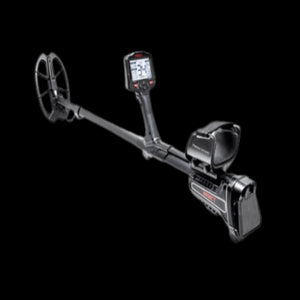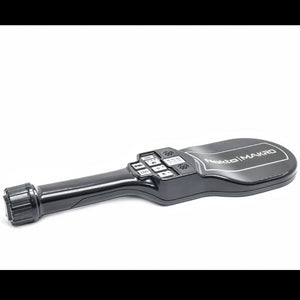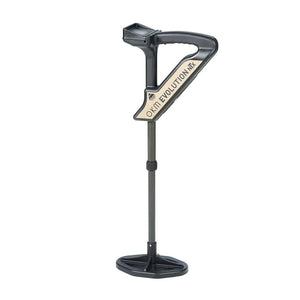Desvelando el misterio: detectores de metales de frecuencia única y multifrecuencia
Crédito de la imagen: Ace Covey - Metal Detecting Life
https://www.metaldetectinglife.com/blog-posts/metal-detecting-code-of-ethics
Para los ojos más agudos, la tierra susurra secretos. Los detectores de metales, nuestras varitas de zahorí modernas, traducen esos susurros en una sinfonía de tesoros ocultos. Pero en esta orquesta de pulsos electromagnéticos, dos melodías distintas se destacan por encima del resto: los detectores de frecuencia única y los detectores de frecuencia múltiple. Elegir entre ellos puede ser un enigma desconcertante para cualquier aspirante a cazador de tesoros. No tema, porque esta inmersión profunda en el mundo de las frecuencias le brindará el conocimiento necesario para tomar una decisión informada y liberar todo el potencial de sus aventuras de detección de metales.
El acto en solitario: detectores de frecuencia única
Imagine un foco que se proyecta sobre el suelo e ilumina una zona específica. Básicamente, así es como funcionan los detectores de frecuencia única. Transmiten una única onda electromagnética a una frecuencia determinada, como una nota constante en una canción. Esta frecuencia determina el tipo de objetivos a los que es más sensible el detector, actuando como un filtro para el inmenso coro de metal que se encuentra debajo de sus pies.
Ventajas de la frecuencia única:
- Profundidad: por lo general, los detectores de frecuencia única ofrecen una profundidad superior para tipos de objetivos específicos, en particular objetos más grandes como reliquias o monedas profundas. Piense en ello como si estuviera cavando en línea recta con una pala enfocada.
- Localización precisa: con menos interferencia en el procesamiento de señales, los detectores de frecuencia única a menudo proporcionan una localización más precisa del objetivo, lo que hace más fácil localizar la ubicación exacta del hallazgo.
- Simplicidad: Los circuitos más simples se traducen en un menor consumo de batería e interfaces más fáciles de usar, lo que los hace ideales para principiantes.
Desafíos de la frecuencia única:
- Versatilidad limitada: al igual que un foco que ilumina solo una parte del escenario, los detectores de frecuencia única pueden pasar por alto objetivos que resuenan en frecuencias diferentes. ¡Imagínese ignorar secciones enteras de la orquesta de metal!
- Interferencias del suelo: el suelo mineralizado o el agua salada pueden enmascarar las señales del objetivo en la frecuencia elegida, lo que hace que el detector quede prácticamente ciego en ciertos entornos. Piense en el foco que queda oculto por la niebla.
- Falsos positivos: De manera similar a cómo una melodía puede sonar como otra en la oscuridad, los detectores de frecuencia única pueden ser engañados por objetos como tapas de botellas o papel de aluminio, lo que genera falsas alarmas frustrantes.
El conjunto versátil: detectores multifrecuencia
Ahora, imaginemos a un director de orquesta que maneja no uno, sino varios focos, bañando el escenario con una sinfonía de frecuencias. Esa es la magia de los detectores multifrecuencia: transmiten y reciben señales en múltiples frecuencias simultáneamente, como si tocaran todos los instrumentos de la orquesta de metal a la vez.
Ventajas de la multifrecuencia:
- Versatilidad: Los detectores multifrecuencia son la navaja suiza del mundo de la detección de metales. Son excelentes para detectar una amplia variedad de objetivos, desde monedas y joyas hasta reliquias más pequeñas e incluso pepitas de oro en entornos difíciles.
- Reducción de interferencias del suelo: al analizar simultáneamente señales en múltiples frecuencias, los detectores multifrecuencia pueden filtrar el ruido del suelo mineralizado y del agua salada, lo que le permite ver a través de la niebla y escuchar la verdadera melodía de los tesoros enterrados.
- Falsos positivos reducidos: el coro multifrecuencia proporciona datos más completos, lo que hace más fácil distinguir los objetivos genuinos de las molestas falsas alarmas.
Desafíos de la multifrecuencia:
- Potencial de profundidad: si bien aún son capaces de alcanzar profundidades impresionantes, los detectores multifrecuencia pueden no alcanzar las mismas profundidades que los detectores de frecuencia única para objetos más grandes en condiciones ideales. Piense en ello como si estuviera concentrando sus esfuerzos en un área más amplia en lugar de cavar un solo hoyo más profundo.
- Complejidad: El aumento de la potencia de procesamiento puede traducirse en un consumo de batería ligeramente mayor y una interfaz más compleja, lo que potencialmente presenta una curva de aprendizaje más pronunciada para principiantes.
Cómo elegir su conductor de frecuencia:
La frecuencia ideal depende de tus objetivos de búsqueda de tesoros y del entorno.
- Principiantes: por su facilidad de uso y versatilidad en la mayoría de las condiciones, los detectores multifrecuencia son la mejor opción. Su capacidad para manipular diversos objetivos y filtrar interferencias los hace perfectos para aprender a utilizar el detector y descubrir una variedad de tesoros.
- Cazadores experimentados: para aquellos que buscan la máxima profundidad para tipos de objetivos específicos, como reliquias o monedas profundas en condiciones ideales, un detector de frecuencia única puede ser una herramienta poderosa. Sin embargo, prepárese para ajustar las frecuencias y aprender a interpretar las señales en diferentes entornos.
- Entornos desafiantes: para la caza en suelo mineralizado, agua salada o áreas con alto ruido electromagnético, los detectores multifrecuencia son los campeones indiscutibles. Su capacidad para distinguirse del resto le permitirá escuchar los más leves susurros de tesoros ocultos.
Conclusión: Sinfonía del suelo
Comprender las diferencias entre los detectores monofrecuenciales y multifrecuenciales es como aprender el lenguaje de la tierra. Cada frecuencia es un dialecto que revela diferentes secretos. Tanto si eliges el detector individual como el conjunto versátil, recuerda que la verdadera magia reside en tu propia curiosidad y en la emoción de la búsqueda. Así que coge tu detector, sintoniza las frecuencias de la tierra y deja que la sinfonía de tesoros ocultos te guíe en tu próxima aventura.
Consejo adicional: algunos detectores avanzados ofrecen opciones híbridas que le permiten cambiar entre modos de frecuencia única y multifrecuencia, lo que le brinda lo mejor de ambos mundos.





















































Dejar un comentario